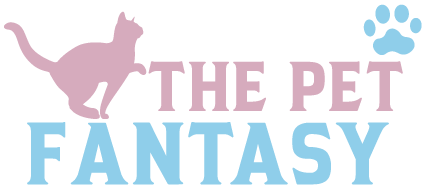Feline Food Sensitivity Adjustment Tool
About the Feline Food Sensitivity Adjustment Tool
The Feline Food Sensitivity Adjustment Tool is an essential resource for cat owners to identify and manage potential food sensitivities in their pets. Provided by The Pet Fantasy, this calculator evaluates observed symptoms, current diet, age, and health status to provide tailored dietary adjustment recommendations. Understanding Food intolerance in cats is crucial for preventing discomfort and maintaining optimal health.
Importance of the Feline Food Sensitivity Adjustment Tool
Food sensitivities in cats, often mistaken for allergies, can cause significant discomfort, including vomiting, diarrhea, and skin issues. The Feline Food Sensitivity Adjustment Tool is vital because it helps owners pinpoint potential dietary triggers and adjust their cat’s diet to alleviate symptoms. Unlike food allergies, which involve the immune system, Food intolerance results from digestive issues, affecting up to 10% of cats. This tool assesses symptoms and diet type, offering recommendations like switching to hypoallergenic or limited-ingredient diets to reduce digestive stress and improve quality of life.
Unaddressed food sensitivities can lead to chronic health problems, such as inflammatory bowel disease (IBD) or malnutrition, and may cause behavioral changes like irritability due to discomfort. The Feline Food Sensitivity Adjustment Tool empowers owners to take proactive steps, such as transitioning to wet food for better digestibility or avoiding common triggers like grains or dairy. Resources from The Pet Fantasy highlight the importance of tailored nutrition, ensuring cats thrive without dietary distress, while insights from Food intolerance underscore the need for careful dietary management.
User Guidelines for the Feline Food Sensitivity Adjustment Tool
To use the Feline Food Sensitivity Adjustment Tool effectively, follow these steps:
- Select Observed Symptoms: Choose the severity of symptoms (none, mild, moderate, or severe) based on your cat’s vomiting, diarrhea, or skin issues.
- Select Current Diet Type: Indicate your cat’s diet (dry, wet, mixed, or raw) based on their primary food source.
- Enter Cat’s Age: Input your cat’s age in years (0-20) to assess age-related digestive capacity.
- Select Health Status: Choose your cat’s health status (healthy, chronic conditions, or known sensitivities) based on veterinary records.
- Input Data: Fill in all fields accurately and click “Generate Dietary Adjustments” to receive personalized recommendations.
This tool is a guideline, not a veterinary diagnosis. Consult a veterinarian for a professional assessment, especially for moderate to severe symptoms. For more on dietary sensitivities, visit Food intolerance.
When and Why You Should Use the Feline Food Sensitivity Adjustment Tool
Use the Feline Food Sensitivity Adjustment Tool in the following scenarios:
- New Symptoms: If your cat shows signs of vomiting, diarrhea, or itching, assess whether food sensitivities are the cause.
- Diet Changes: When switching your cat’s food, use the tool to ensure the new diet suits their digestive needs.
- Chronic Conditions: If your cat has conditions like IBD or allergies, tailor their diet to minimize flare-ups.
- New Cat Adoption: When adopting a cat, evaluate their dietary needs to prevent sensitivity-related issues.
- Routine Monitoring: Use the tool periodically to ensure your cat’s diet remains appropriate as they age or their health changes.
The primary reason to use this tool is to enhance your cat’s comfort and health by addressing food sensitivities early. Proper dietary adjustments can prevent chronic issues and improve energy and well-being. The Feline Food Sensitivity Adjustment Tool, as recommended by The Pet Fantasy, ensures informed dietary choices, while understanding Food intolerance helps owners manage their cat’s nutrition effectively.
Purpose of the Feline Food Sensitivity Adjustment Tool
The Feline Food Sensitivity Adjustment Tool serves multiple purposes to improve feline health and owner awareness:
- Identify Sensitivities: Assess symptoms, diet, age, and health to pinpoint potential food sensitivity triggers.
- Provide Dietary Recommendations: Offer tailored suggestions, such as hypoallergenic diets or gradual food transitions.
- Prevent Health Complications: Mitigate risks of chronic digestive or skin issues through proactive dietary changes.
- Educate Owners: Raise awareness about the importance of customized nutrition for feline wellness.
The tool aligns with veterinary guidelines for managing food sensitivities, ensuring owners can take proactive steps to keep their cats healthy. By addressing specific factors, it provides actionable advice, supported by insights from Food intolerance.
Why Managing Food Sensitivities Matters for Cats
Food sensitivities in cats can cause significant discomfort and, if left unaddressed, lead to chronic health issues like IBD, skin infections, or malnutrition. The Feline Food Sensitivity Adjustment Tool helps owners identify and manage these sensitivities by evaluating symptoms and diet, offering recommendations like switching to limited-ingredient or hydrolyzed protein foods. Cats with sensitivities may react to common ingredients like chicken, grains, or dairy, and this tool helps owners experiment with dietary changes safely. For example, a cat with moderate vomiting may benefit from wet food, which is easier to digest than kibble.
Managing food sensitivities also enhances the pet-owner bond by reducing discomfort-related behaviors like irritability or lethargy. The tool considers health status, recommending specialized diets for cats with chronic conditions, and age, recognizing that kittens and seniors may have different digestive tolerances. Proper nutrition, as detailed in Food intolerance, is critical for preventing digestive stress, while resources from The Pet Fantasy provide guidance on selecting sensitivity-friendly foods, ensuring your cat thrives with a tailored diet.
